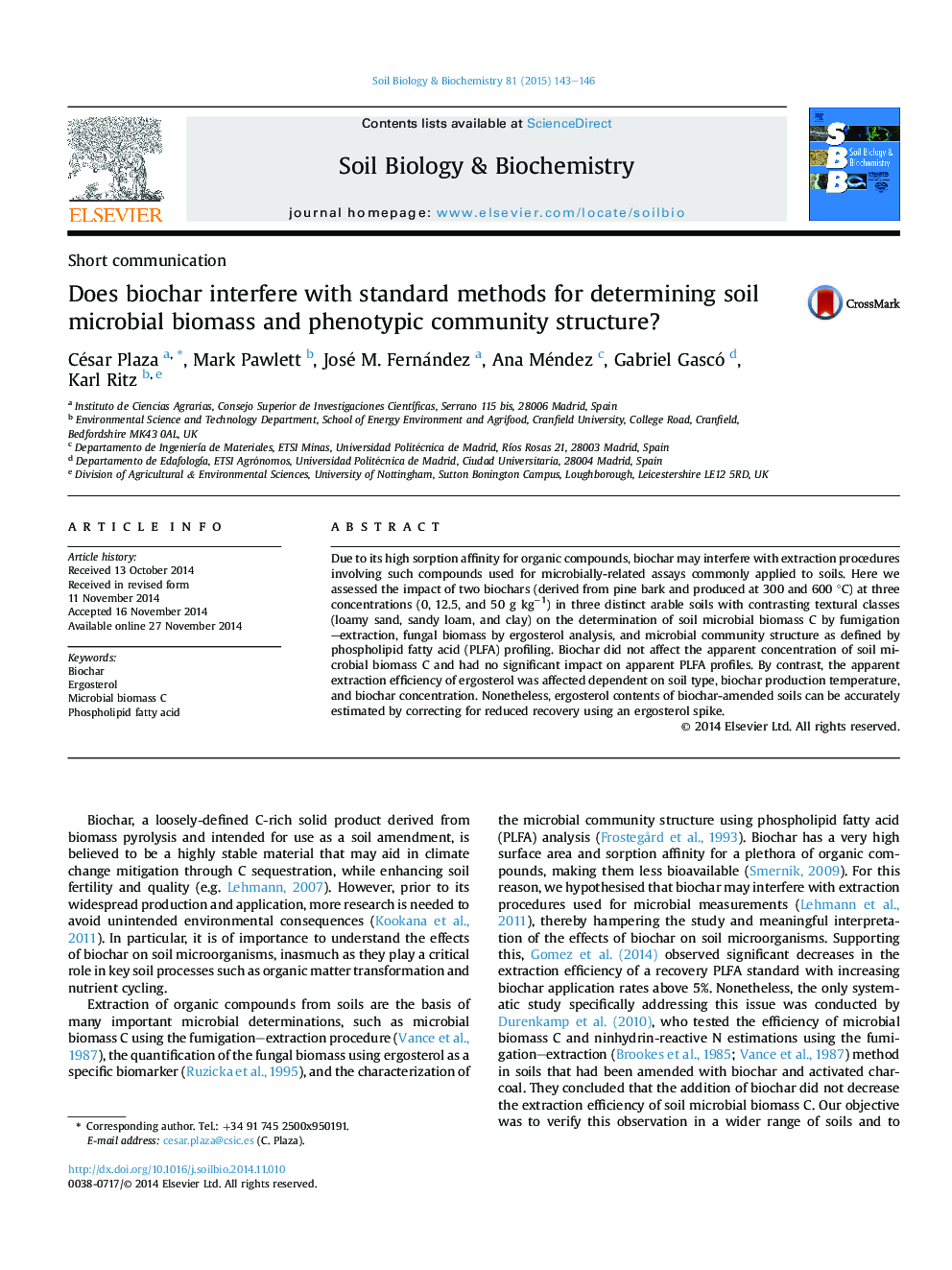| Article ID | Journal | Published Year | Pages | File Type |
|---|---|---|---|---|
| 2024423 | Soil Biology and Biochemistry | 2015 | 4 Pages |
Abstract
Due to its high sorption affinity for organic compounds, biochar may interfere with extraction procedures involving such compounds used for microbially-related assays commonly applied to soils. Here we assessed the impact of two biochars (derived from pine bark and produced at 300 and 600 °C) at three concentrations (0, 12.5, and 50 g kgâ1) in three distinct arable soils with contrasting textural classes (loamy sand, sandy loam, and clay) on the determination of soil microbial biomass C by fumigation-extraction, fungal biomass by ergosterol analysis, and microbial community structure as defined by phospholipid fatty acid (PLFA) profiling. Biochar did not affect the apparent concentration of soil microbial biomass C and had no significant impact on apparent PLFA profiles. By contrast, the apparent extraction efficiency of ergosterol was affected dependent on soil type, biochar production temperature, and biochar concentration. Nonetheless, ergosterol contents of biochar-amended soils can be accurately estimated by correcting for reduced recovery using an ergosterol spike.
Related Topics
Life Sciences
Agricultural and Biological Sciences
Soil Science
Authors
César Plaza, Mark Pawlett, José M. Fernández, Ana Méndez, Gabriel Gascó, Karl Ritz,
